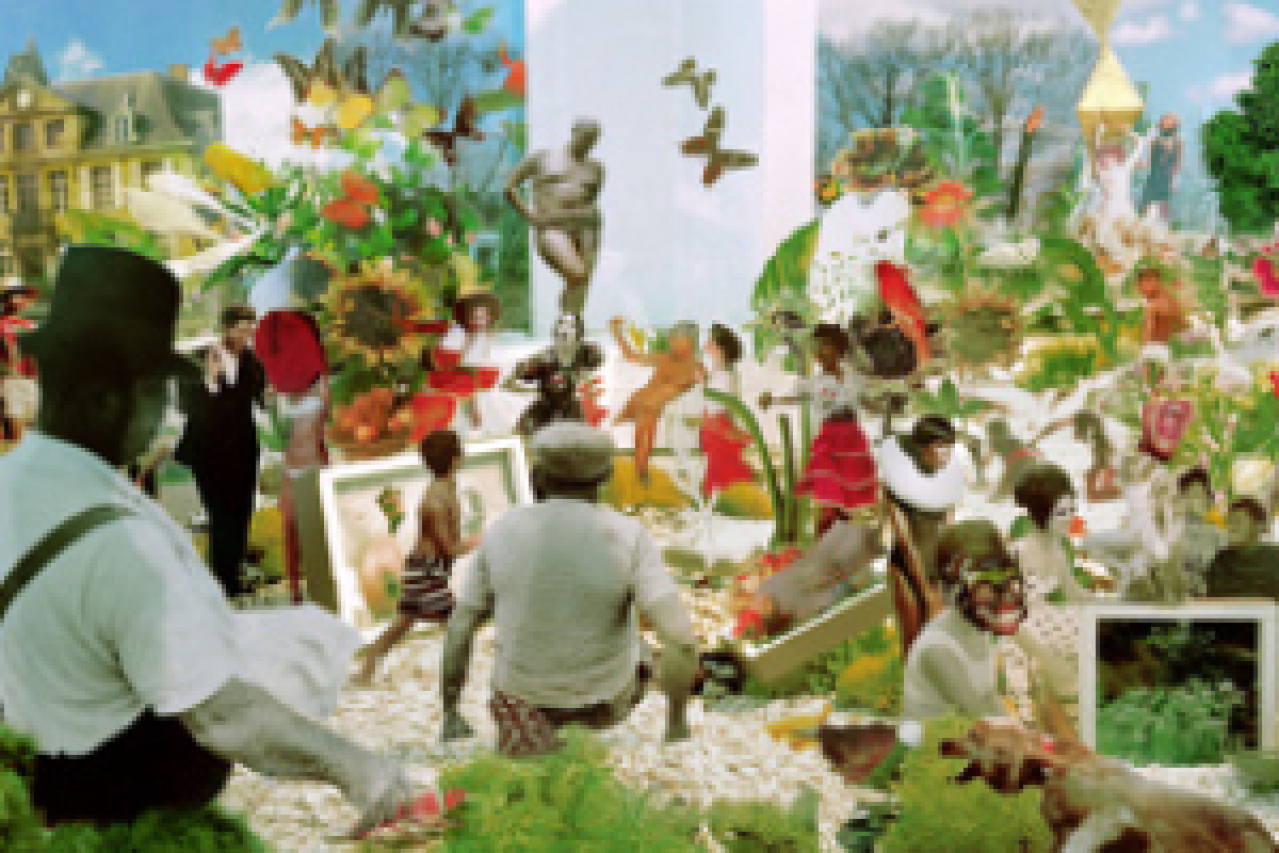Master

(© Julieta Cervantes)
Walking into the Irondale Theatre Center, where the Foundry Theatre's world premiere of W. David Hancock's Master is now running, you might wonder whether you're in the right place. The cavernous upstairs space, with a dozen or so folding chairs haphazardly grouped in the center, is filled with paintings, modern sculptures, and tables chockablock with sepia-toned photos, found objects, and explanatory index cards. It looks less like a theater and more like a multimedia art installation.
And, in a sense, it is. Amid soft, haunting music and the distant echo of a crow cawing (sound by Mikaal Sulaiman), audiences spend the first minutes of Master inspecting the large, impressive collection of artwork curated for this piece. The art was ostensibly created by late black artist James Leroy "Uncle Jimmy" Clemens. During his life, Uncle Jimmy was consumed by his magnum opus, The Illuminated Twain, a vast, radical retelling of Huckleberry Finn, the remnants of which are on display here.
The tribute exhibit (he died in 2016) is organized by Uncle Jimmy's white, estranged wife, Edna Finn (played with convincing diffidence by Anne O'Sullivan), and Edna and Jimmy's son, James (Mikéah Jennings in a riveting performance). Both take turns speaking about Uncle Jimmy's troubled life, his mercurial temperament, and his ambitious, race-obsessed work. As they speak, however, it becomes clear that the massive task of bringing this work to the public is not so much Edna and James's homage to Uncle Jimmy as it is their attempt to exorcise a family legacy of racism that drove the artist to the edge of madness.
Master is unquestionably a provocative work of theater-art. Hancock, visual artist Wardell Milan, and director Taibi Magar have assembled a mind-bogglingly intricate and multilayered audio-visual experience that delves into the issue of race in startling, sometimes chilling ways: One piece of artwork features a video game in which the goal is to save a black woman from being lynched (created by projection designer John Narun). It would be easy to spend hours studying these works, reading the realistically faded index cards, and stitching together Uncle Jimmy's interpretation of a Twain novel that we thought we knew.
But after 15 or so minutes, Edna enters nervously and speaks to us from behind a podium about her late husband and the dark halls of race through which he wandered his whole life and could never escape. Jennings follows with a captivating performance as James Jr. His impassioned stories about his father eventually give way to a poetic yet rambling screed that mars an otherwise fascinating and resonant monologue. We feel disoriented as he storms from the room, and we realize that he is not coming back. Then an assistant enters and invites us to inspect Uncle Jimmy's artwork again, with our new knowledge of his family and life in mind. The realism of the production is appropriately unnerving. For a moment, we feel as if we are intruders.
A unique work, Master is one of the most fascinating theatrical experiences you will have this season. Though the performances themselves last only about 45 minutes, there is much to admire in this ambitious, complex work and its contribution to America's persistent and inescapable discussion of race — forcing us to acknowledge that we are all still shackled by it.

(© Julieta Cervantes)











